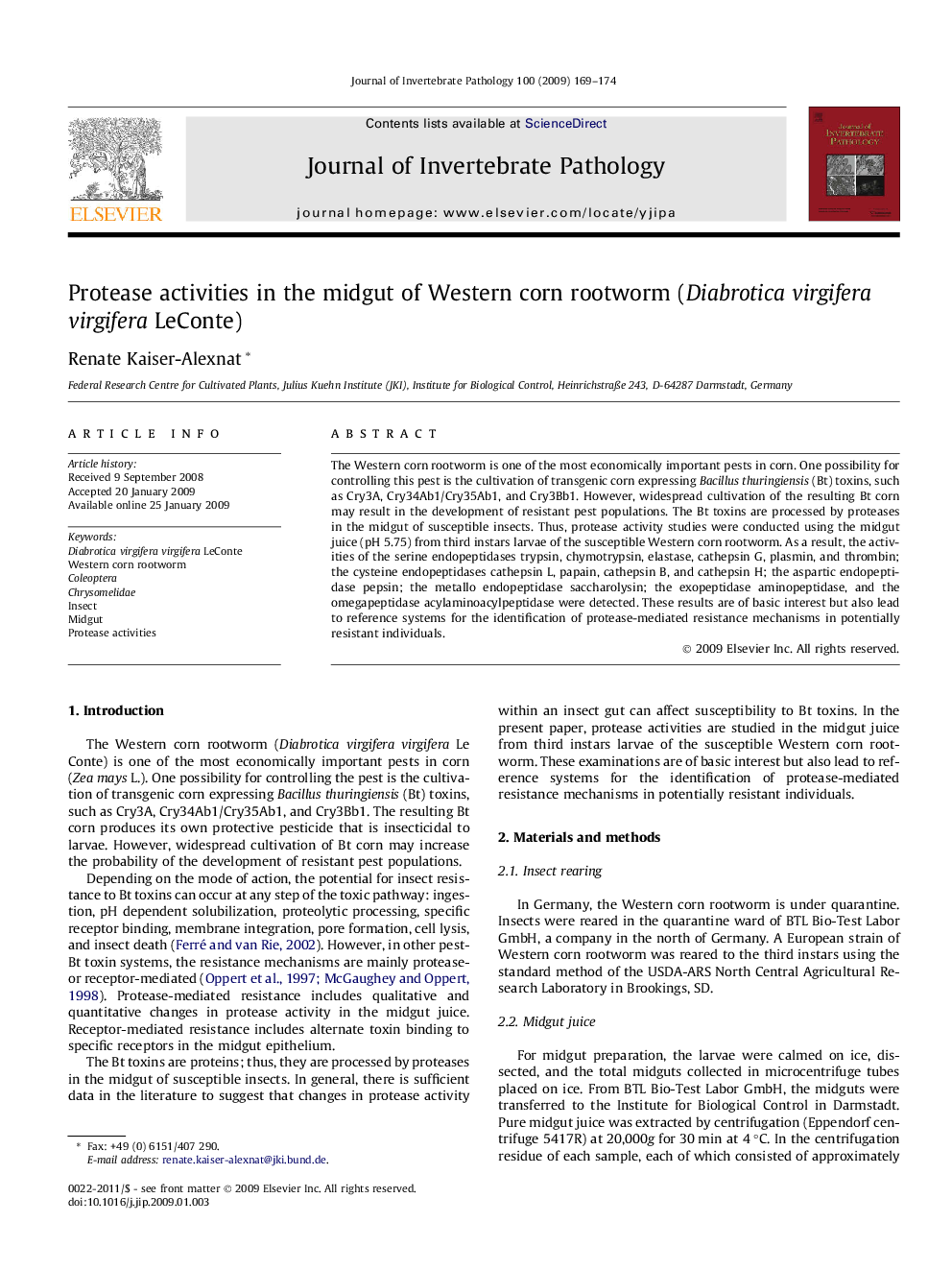| کد مقاله | کد نشریه | سال انتشار | مقاله انگلیسی | نسخه تمام متن |
|---|---|---|---|---|
| 6389888 | 1628239 | 2009 | 6 صفحه PDF | دانلود رایگان |

The Western corn rootworm is one of the most economically important pests in corn. One possibility for controlling this pest is the cultivation of transgenic corn expressing Bacillus thuringiensis (Bt) toxins, such as Cry3A, Cry34Ab1/Cry35Ab1, and Cry3Bb1. However, widespread cultivation of the resulting Bt corn may result in the development of resistant pest populations. The Bt toxins are processed by proteases in the midgut of susceptible insects. Thus, protease activity studies were conducted using the midgut juice (pH 5.75) from third instars larvae of the susceptible Western corn rootworm. As a result, the activities of the serine endopeptidases trypsin, chymotrypsin, elastase, cathepsin G, plasmin, and thrombin; the cysteine endopeptidases cathepsin L, papain, cathepsin B, and cathepsin H; the aspartic endopeptidase pepsin; the metallo endopeptidase saccharolysin; the exopeptidase aminopeptidase, and the omegapeptidase acylaminoacylpeptidase were detected. These results are of basic interest but also lead to reference systems for the identification of protease-mediated resistance mechanisms in potentially resistant individuals.
Journal: Journal of Invertebrate Pathology - Volume 100, Issue 3, March 2009, Pages 169-174